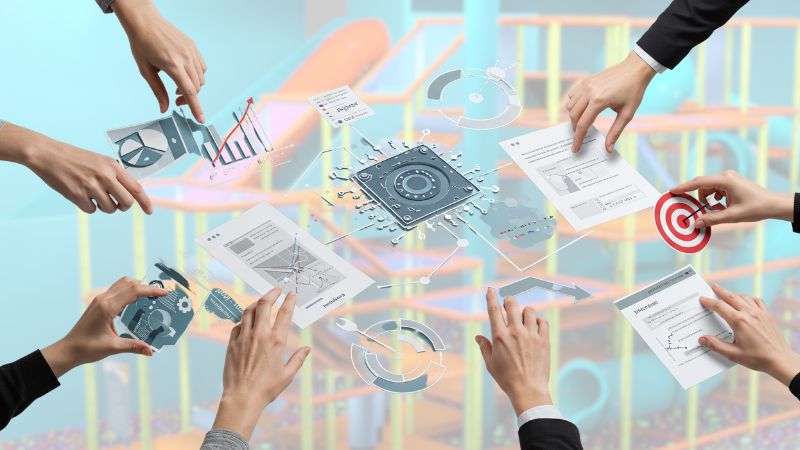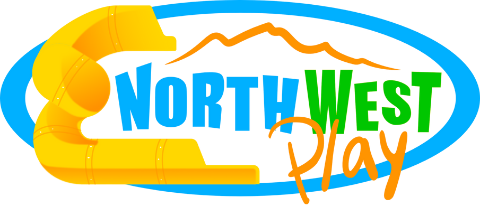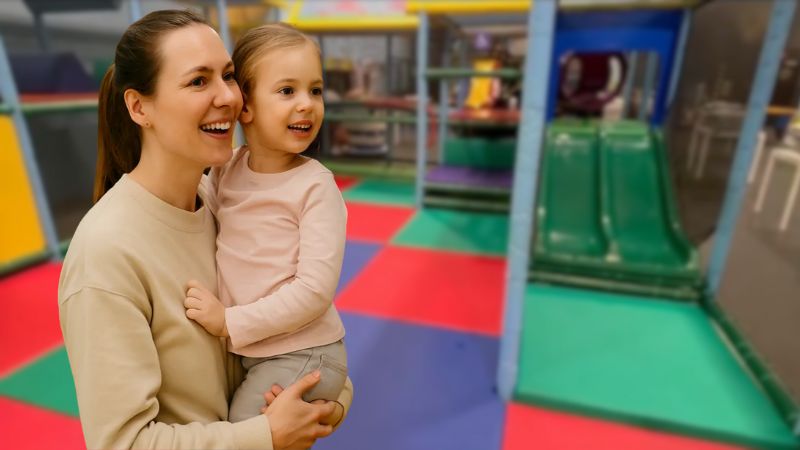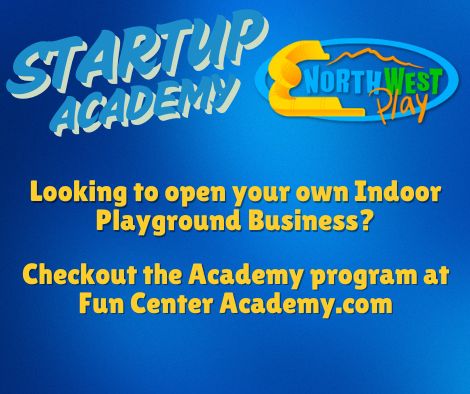For the indoor play market, no matter how dazzling or “flashy” your play equipment, the single most important person is Mom. She’s the one doing the research, bringing the kids, trimming back the budget when it’s needed, reading the online reviews and telling her friends if she’s had a bad experience. So if Mom feels uncomfortable, unsafe or undervalued in your facility—no matter how fun you think your attraction mix is—word of mouth will kill you faster than any marketing misstep.
That’s why at Northwest Play we keep telling our owner-operators: you must build your business around her experience. If mom is walking in with children, she’s assessing everything—from the parking lot to the check-in desk to what the toddler area smells like. You may see a jungle-gym paradise; she sees a decision: “Is this worth our time? Will my child be safe? Will I feel comfortable and respected as a parent?”
To help, we call out what we’ve dubbed the 5 Pillars of Mom’s Experience:
Safety
Security
Visibility
Cleanliness
Value
These aren’t just nice-to-haves—they’re foundation stones. If any one of them slips, mom’s experience begins to erode. If you ignore them all, you’re setting yourself up for failure. We’ve seen it many times.
The 5 Pillars in Detail
Let’s dive into each Pillar—what it means, how it shows up in your facility, and how failing there will cost you.
1. Safety
When Mom walks through your doors, the very first question in her mind (even if she doesn’t consciously ask it) is: “Is my child safe here?”
That covers everything from the structural integrity of your play equipment to staff supervision, to how you handle emergencies and maintenance. Even if you’ve got the coolest slides in the region, if a parent sees rust, missing padding, loose bolts, or a dark corner unsupervised, her trust erodes.
What to check:
Ensure your play structure is built to code, complies with relevant safety standards for equipment, spacing, cushioning, entry and egress, etc.
Staff must be trained in supervision, first aid/CPR, and clear emergency protocols. If the parent feels you’re winging it, they’ll not only walk away— they’ll tell others.
Perform regular safety walks yourself (yes, the owner). Walk as if you’re a parent dropping your child off for two hours. What do you see? What concerns you?
Inspect not just the play equipment surfaces but hidden zones—under stairs, behind slides, corners—dust builds, monitors break, hazards hide if you don’t stay vigilant.
If you fail on safety: the social media headline becomes “wouldn’t trust my kid here”. Miss it once, the story spreads more quickly than you think.
2. Security
Security is the sibling of safety—but slightly different. Security says: “I know who belongs in this space. I know this place is being managed. I know by the time I leave I’ll get my child back, and I’ll be treated respectfully.”
For mom, security covers things like: check-in/check-out controls, ID wristbands or proper parent verification, staff monitoring of entry and exit, clear policies for guest behavior. It also covers how you protect her personal space—her phone bag, her coffee table, her viewpoint while she watches the kids.
What to check:
Entry zone visibility: Can staff see when someone enters? Is there controlled access? Is the desk staffed and alert?
Wristband or badge system: Does each child get tagged? Does the parent have a matching tag or token? If you skip this, you’re asking for anxiety.
Staff presence in the play area: Not just at the desk. If mom sees a court-collision of two six-year-olds unsupervised, she asks herself if this place is managed.
Parent waiting zones: Are there places for parents to sit where they can see the kids but aren’t isolated? Is there theft risk of personal items?
Lost-child protocol, exit monitoring: Are you ready for the “what if”? Because mom is.
If you fail on security: mom’s story becomes “I felt uneasy leaving my child”. And friends of that mom will hear it.
3. Visibility
Visibility ties together safety and security but is more about perception: “Can the parent see what’s going on? Are they part of the show, not shoved aside?” Visibility means physical sightlines, intuitive layout, lighting, clear signage, and a welcoming check-in zone. It also means that the facility looks open, inviting, and trustworthy—not hidden behind a maze of corridors.
What to check:
Sightlines: From the parents’ vantage point (waiting zone, café area, check-in), can they see a meaningful portion of the play area? If they enter and feel they’re stepping into chaos or confusion, you’ve lost them.
Lighting: Is it too dim? Are there dark corners or areas behind blind walls where activity is hidden? Bright, open spaces signal transparency.
Clear signage: Are zones clearly labeled (toddlers, big kids, parents’ lounge)? Are rules clearly posted? Are all physical features (stairs, slides, climb zones) visible and obvious?
Check-in visual impact: The first impression matters. When mom walks in, what does she see? A clean, organized check-in desk with friendly staff? Or a jumbled chaos of parties being set up, staff missing, bag drop-off looking like an afterthought?
Parent vantage: Offering a café or lounge that faces the play area is smart. If a parent is stuck behind a wall or can’t see the kids for a portion of the play (and you say ‘all supervised by staff’), they’ll still feel disconnected.
If you fail on visibility: mom feels “I’m not sure what’s happening in there”. And she’ll either watch the clock or decline to come back.

4. Cleanliness
This one should be a no-brainer—but it’s amazing how often it gets overlooked once the business is off the races. For mom, cleanliness equals respect—for her time, her children, and the space she’s paying to use. For her, dirty means “I’m not the priority here.” Dust, sticky floors, smelly carpeting, dirty restrooms—all of it speaks loud.
What to check:
Daily/weekly cleaning schedule for the play structure: under slides, in tunnels, on upper platforms. Those are dust-bunny traps.
Restrooms: Are adult‐restrooms clean, stocked, and large enough? Are changing stations sanitary and well-equipped?
Café/lounge area: If you have food service, are tables cleaned quickly? Are spills handled? Are floors sticky?
Entry & exit zones: First impressions count. If the parking lot is littered, the entry mat is muddy or smells of stale popcorn and spilled soda, Mom’s antenna goes up.
Odour control: If the place smells like stale trash, sweaty socks, or that “rubbery” equipment smell, the parent works twice as hard to justify staying.
Maintenance of high-touch surfaces: Regular cleaning of benches, trays, chairs, door handles, pedals, play pieces—in a pandemic-aware world, this is non‐negotiable.
If you fail on cleanliness: mom’s story becomes “I felt like I was in a grease pit”. That cuts loyalty faster than price.
5. Value
Finally, value. Fun, interactive equipment is great. But mom asks: “Is this worth what I’m paying? Will I get more than just ‘some play time’?” She isn’t just counting dollars, but she is wasting them if the experience doesn’t meet expectations. Value means perceived benefit—not necessarily lowest price, but highest return for her time, money, and effort.
What to check:
Transparent pricing: Is your entry fee clear? Do parents understand what they’re getting (open play, party, café access, time limits)? Hidden fees scream “we aren’t honest.”
Upsells done right: Snacks, party rooms, memberships – all are fine if framed properly (and don’t make mom feel nickel-and-dimed). The key is: does the upgrade add real value?
Repeat-visit incentives: Mom loves a deal that makes sense—loyalty discounts, off-peak pricing, sibling discounts.
Time vs cost: Is the length of play, number of children, service matched to price? If she pays for two hours and the space is crowded, under-staffed, or broken down partway through, that’s poor value.
Overall experience vs alternatives: For many parents, they’re comparing your facility not just to other play centres, but to “stay-home and video game” or “go to grandma’s” or “go outside” options. You’ve got to beat those. According to industry commentary, building something unique isn’t enough—you must check the market and match expectations.
If you fail on value: mom says “I’m not coming back for this again”. And she tells her network it wasn’t worth it.
Why These Pillars Crack — and What to Do
Here’s the cold truth: these 5 pillars are no-brainers. They’re obvious, you’ve heard them before. But we see them crack anyway—and mostly it happens because owner engagement drops.
When the owner becomes remote, too busy, delegating everything, trusting “the team” but rarely visiting, things start to slide. The play structure is a magnet for dust, wear and tear, deterioration, sticky spills and “we’ll fix it when it slows down” attitude.
Owner Checklist
Make regular visits yourself. Walk the facility with the eye of a customer. Look from the parking lot to the entry, to the play zones to the café/rest area.
Don’t just go when you “feel like it” — schedule a walk every Saturday afternoon when you’re open for business and busy. From the parking lot: is the lot clean? Lights working? Is the awning/overhang weather-protected so mom and stroller don’t get soaked?
Entry walk-through: When you walk in, what’s the first visual? Are multiple parties checking in without coordination? Is it Managed Chaos or full Frenzy? What’s the aroma? (Yes, we said aroma—mom notices.)
Engage staff: Reward them for finding issues (dust spots, broken equipment, scuffed furniture, sticky floors) and correcting them. Make cleanliness, visibility, and safety part of their KPI.
Turn this into part of your weekly routine—not just emergency fixes. When you catch things early you prevent the degradation that leads to bad reviews and bad word-of-mouth.
The Absentee Owner Danger
If you’re an absentee owner—weekend only, remote location, big franchise-style mindset—you’re at the highest risk. You might have a great concept, good launch numbers, initial buzz—but if you’re not showing up, you can’t steer the culture or the minute-to-minute details.
Owners who stay involved at some level with hiring, supervising, walking the floor and connecting with customers ultimately perform better.
In short: you might hate being in the business every weekend—but you must show up during a peak time. Because when you don’t, problems either hide or grow. By the time you hear about them they’ve affected several guest visits, maybe dozens, maybe word has already spread.
How Northwest Play’s Holistic Approach Makes the Difference

At Northwest Play, we believe success in the indoor play industry isn’t about installing a fancy playground and walking away. It’s about taking a holistic approach — one that connects design, operations, and the guest experience into a single, high-performing system.
Because you can have the most colorful, high-tech play structure in the region… but if Mom walks in and feels ignored, unsafe, or undervalued — your ROI will drop, your margins will tighten, and your repeat traffic will vanish.
That’s why our team looks at every project as a living, breathing ecosystem — one that needs to work as beautifully for guests as it does for operators.
Here’s how we make that happen:
Facility Layout and Flow:
Everything begins with layout. A smart, intentional floor plan is what transforms a playground from “busy” to profitable.We design for both operational efficiency and guest comfort:
Our layouts balance visibility, parent zones, food service flow, and party circulation — because good design doesn’t just look right; it feels right to everyone who walks through the door. On busy days, your team needs to see and manage everything — from check-ins and café traffic to party flow and cleanup — without bottlenecks.
On slow days, the layout still has to feel energetic, comfortable, and open, without feeling empty or awkward, and be manageable by fewer staff.
Designing From Parents Point of View:
We don’t just build for kids.
We design every play space from the parent’s perspective — focusing on sightlines, comfort, and emotional reassurance.That means building entry sequences that create positive first impressions, ensuring clear visibility into every play zone, and creating parent-friendly vantage points that encourage relaxation and trust.
When parents feel comfortable, they stay longer, spend more, and come back more often.
Operational Consulting:
Once the space is built, the work isn’t over — it’s just beginning.We provide experienced operational consulting to help owners and managers master the details that define daily excellence:
How to walk the facility with a critical eye
How to identify and correct weak spots before guests do
How to engage and reward staff for upholding the 5 Pillars of Mom’s Experience
Our approach bridges the gap between design and operations so every detail works as intended — every day.
Maintenance & Safety Roadmap:
Safety is never “set and forget.”That’s why we embed maintenance and safety systems right into the project plan — including checklists, inspection schedules, and what we call “dust-bunny audits.”
Because that layer of dust under the slide?
It’s not just cosmetic — it’s a signal to parents that the details are slipping. And when the details slip, so does trust.A clean, well-maintained facility doesn’t just look better — it feels professional, safe, and cared for.
Guest Experience Coaching:
At the heart of everything we do is the guest experience.We help owners and their teams create play specific staff-training that go beyond rules and scripts.
Our focus is on human connection — both to engage and interact with kids and the playground experience, as well as teaching staff how to make parents feel seen, heard, and valued.Because when Mom feels respected and her kids are safe and engaged, she becomes your best marketing tool — spreading word-of-mouth that no ad campaign can match.
The Result: Alignment From Every Angle:
When all five of these elements — layout, design, operations, safety, and guest experience — work together, your business operates smoothly, looks professional, and naturally invites repeat visits.That’s the Northwest Play difference:
We don’t just design playgrounds.
We design profitable, sustainable guest experiences that keep families coming back.
Bringing It All Together: The Customer Journey
Let’s walk through a hypothetical visit from Mom’s point of view—so you can see how each pillar interplays through her eyes.
Arrival/parking lot: Mom pulls into the lot. It’s clean. Lights work. The building front is inviting and weather-protected. She feels safe getting the stroller out without worrying about traffic or dark corners (Visibility, Safety).
Entry & check-in: She enters: the lobby is bright, staff greet her, signage is clear. The check-in desk looks organized. While the children run ahead, she glances into the play area: she can actually see activity, staff presence, and clean surfaces (Visibility, Security).
Play zone view: Mom takes a seat in the parent lounge/café area. From there she can glance into the toddler zone, the big-kid zone, and the parents’ café. She sees no hidden corners, no unsupervised climbing chaos. Staff are casually monitoring (Visibility, Security, Safety).
While kids play: She notices the floor is clean, no spilled juice, the benches aren’t sticky, toys not scattered under the mats. The restrooms she visits before departure are tidy, stocked, no odor (Cleanliness). She feels at ease enough to relax—maybe check her phone, maybe have a coffee.
Checkout/exit: At exit she receives the wrist-band return without hassle, staff thank her, and she thinks: “That was worth it.” She paid what she expected, got two hours of play, coffee and time to herself. She feels valued (Value).
After the visit: She goes home and posts a photo of her kid beaming with “I want to go back!” She tells her friend on WhatsApp: “We had a great time at “your” Indoor Play Center. The parents’ lounge was comfy and the kids were safe.”
If any of those steps had failed—her inner voice changes to: “Maybe next time we’ll try something else.” She’ll tell one friend, maybe two, post something online – your churn climbs.
Final Thoughts
The indoor play industry isn’t a cakewalk—it’s competitive, operationally intensive, and reliant on delivering consistently for busy families. But here’s the good news: the 5 Pillars of Mom’s Experience (Safety, Security, Visibility, Cleanliness, Value) are manageable. They don’t require reinventing the wheel—they require disciplined execution.
If you build a play centre influenced by Northwest Play’s consultative, holistic model—one that acknowledges mom as the primary buyer, designs for her comfort and trust, trains the team to guard these pillars, and makes your walk-throughs non-negotiable—you’re giving yourself an enormous advantage.
In a market where many operators build the equipment and assume everything else will fall into place—you’ll be the one who stands out. You’ll build not just a playground, but a recurring destination families choose repeatedly. And when mom feels safe, respected, seen and valued, the rest follows: stronger traffic, higher spend, better reviews, and a business that thrives.
At Northwest Play we’re not just selling play structures—we’re partnering with operators to build a full experience that keeps mom (and by extension family) returning, referring and staying active long-term. Because in the end the playground isn’t just for kids—it’s for the parent who chose to bring them.
Let’s make sure you’re the one mom recommends.



